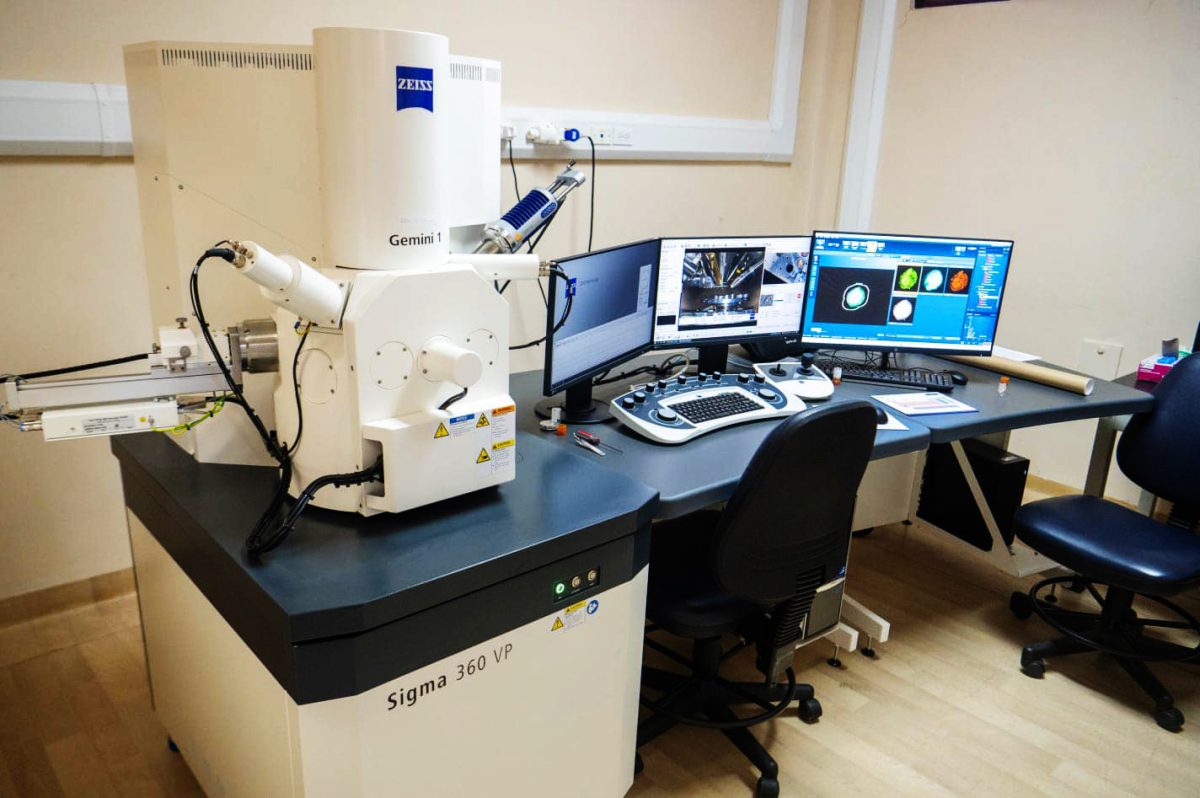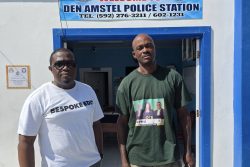The Guyana Forensic Science Laboratory (GFSL) has procured a new Field Emission Scanning Electron Microscope (SEM) Sigma 360 VP.
The equipment will be used for testing gunshot residue and processing various forensic applications, including fibres, ballistics, explosives, documents, toxicology, and entomology.
The SEM will also be used in cases of vehicular accidents. It can analyze glass from windshields or lamps to determine if the lights were on during an accident. It can also examine paint from cars, as well as artwork and currency.
At a ceremony at the lab yesterday, a representative from the supplier explained the machine’s capabilities stating that “We can also check, for example, cutting marks, to understand if some kind of fabric, like a rope, was accidentally worn out, cut by fatigue, or subjected to excessive force, or if it was intentionally cut with tools. In documents, we can determine the sequence of overlapping traces, such as who signed a document last or if something was written after it was signed. We can also check if toner from printers is layered over ink from a pen or vice versa. Additionally, the SEM can analyze toxic materials spilled in rivers or other water streams, identifying heavy metals like lead, cobalt, antimony, or arsenic. For instance, it can be used in biopsies or by filtering water, soil, or leaves to understand if plants are absorbing harmful materials from the soil.
In entomology, the SEM allows detailed study of larvae, which can help establish the time of death in forensic cases. The SEM can also analyze traces like pollen or sand to determine a person’s location, potentially identifying rare minerals in sand found on boots or shoes.
It can also help to detect illegal mining. Beyond forensic applications, the instrument is also valuable for research and routine analysis in natural resources, such as oil, gas, and mining, as well as in industries like food, steel, aluminum, copper, automotive, aerospace, and academia for material and life science research.
Deputy Director of the laboratory, Paris Griffith, described the development as “another major milestone and accomplishment for the laboratory in spite of several setbacks.” She also added that “The acquisition of this instrument is critical if we consider the significant increase in seized firearms and firearm-related crimes over the years. The GFSL’s role in analyzing gunshot residue is key in supporting the criminal justice system, as courts rely on our expert testimony and quality results to aid in rulings.”
Moreover she noted that the equipment is the best in its field, due to its long lifespan. Its setup allows for faster case processing and supports numerous forensic applications, including fibers, ballistics, explosives, documents, toxicology and entomology.
The $86 million SEM can operate 24/7, analyze samples overnight, and process up to 19 samples simultaneously. Currently, five forensic experts are being trained to operate the instrument.









